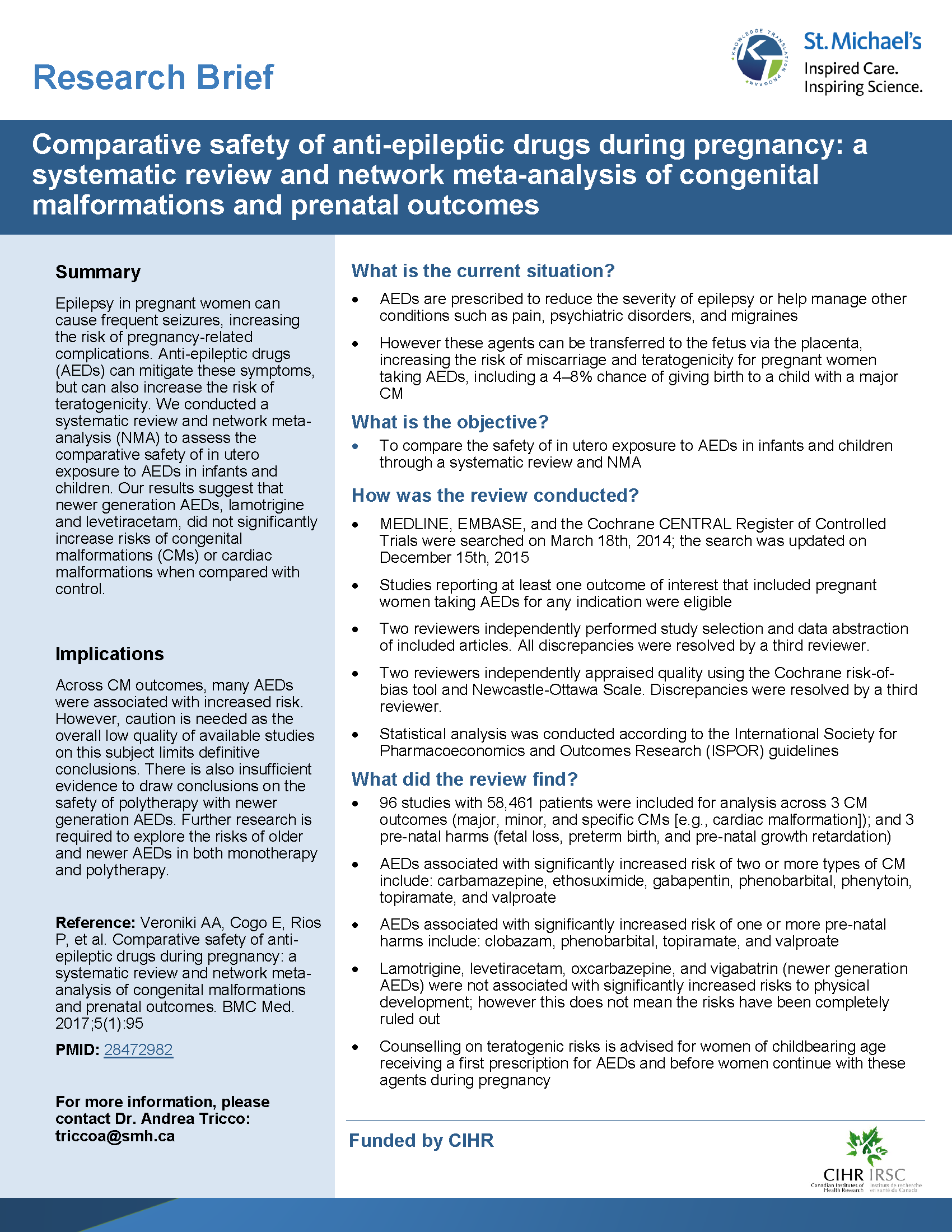Comparative safety of anti-epileptic drugs during pregnancy: a systematic review and network meta-analysis of congenital malformations and prenatal outcomes
Veroniki AA, Cogo E, Rios P, Straus SE, Finkelstein Y, Kealey R, Reynen E, Soobiah C, Thavorn K, Hutton B. Comparative safety of anti-epileptic drugs during pregnancy: a systematic review and network meta-analysis of congenital malformations and prenatal outcomes. BMC Med. 2017 May 5;15(1):95. doi: 10.1186/s12916-017-0845-1.
[sidebar]
Commissioned and Funded by: Canadian Institutes of Health Research (CIHR) through the Drug Safety and Effectiveness Network (DSEN)
Share Buttons [span][/span]
[ssba-buttons] [/sidebar] [sidebar-content]- Our results can be used by patients and physicians to tailor administration of these agents
- Provided Health Canada with evidence on the safety of these agents for their decision-making
- Featured in a media article targeting epileptic patients and physicians
- Anti-epileptic drugs associated with increased risk for two or more types of congenital malformations included: carbamazepine, ethosuximide, gabapentin, phenobarbital, phenytoin, topiramate, and valproate
- In comparison to children not exposed to anti-epileptic drugs in utero, children whose mothers used newer-generation agents (e.g., lamotrigine and levetiracetam), were not at increased risk for congenital malformations. The aforementioned children were also less likely to experience cardiac malformations. However, this does not mean these agents are not harmful to children in utero, as the low quality of available studies suggests that these findings be interpreted with caution
Altmetrics:
Related Projects:
[/sidebar-content]Category : KS Projects
Date : 12 Aug 2020



